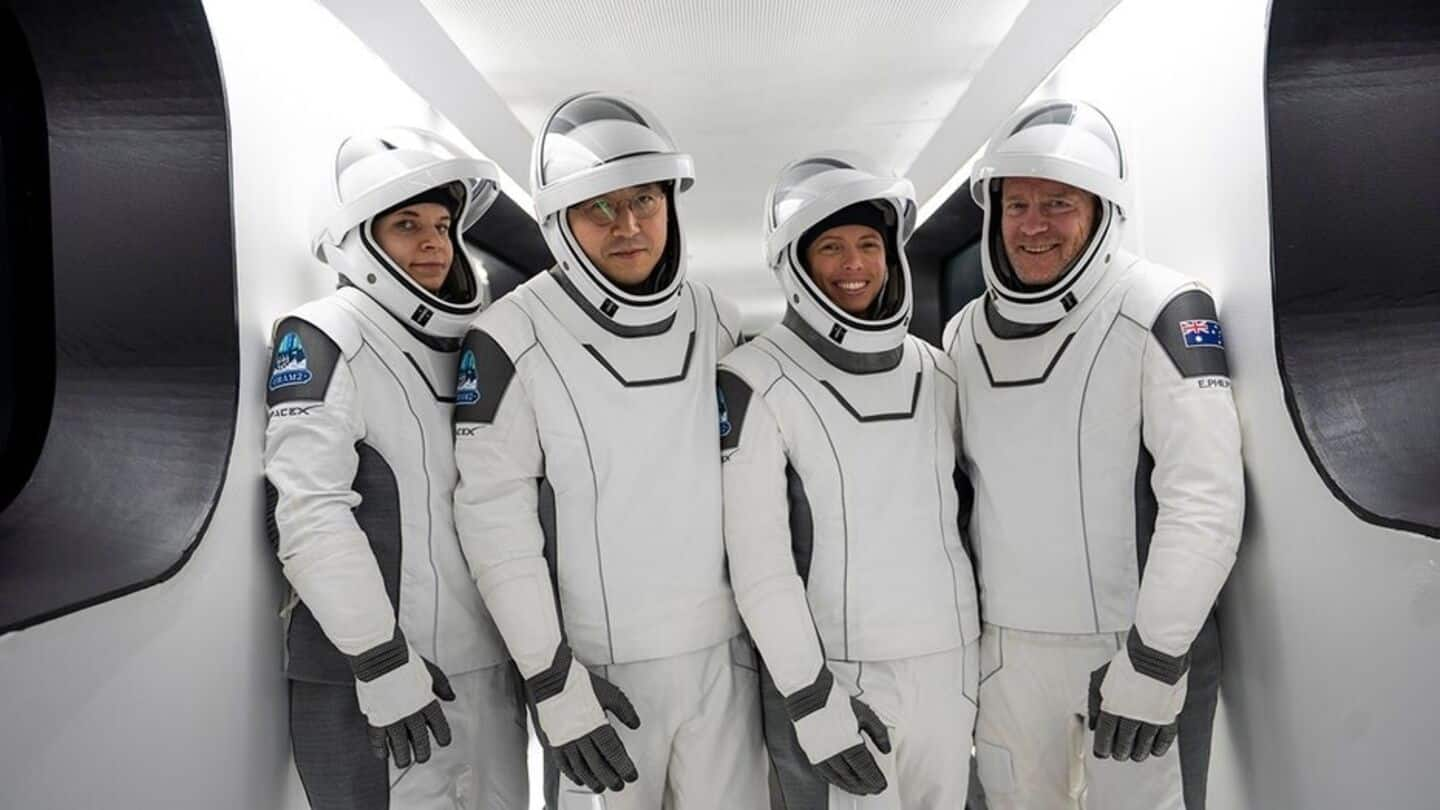
SpaceX launches private astronauts on historic polar orbit flight
What's the story
SpaceX has made history with its latest human spaceflight, the Fram2 mission.
The groundbreaking venture marks the first time a crewed spacecraft has been launched into a polar orbit around Earth.
The mission started earlier today when a Falcon 9 rocket carrying the Crew Dragon capsule "Resilience" lifted off from NASA's Kennedy Space Center in Florida.
The four-member crew will spend three to five days circling above Earth's most remote locations.
Crew details
Meet the Fram2 crew
The Fram2 mission is led by Chun Wang from Malta, with a diverse team including vehicle commander Jannicke Mikkelsen from Norway, pilot Rabea Rogge of Germany, and Australian medical officer Eric Phillips.
The Falcon 9 rocket's first-stage booster separated successfully and landed on SpaceX's droneship in the Atlantic Ocean after a deceleration burn.
Meanwhile, the second stage continued into low Earth orbit (LEO) and released Resilience to operate independently under 10 minutes post-liftoff.
Spacecraft history
Resilience: A reliable spacecraft
The Crew Dragon capsule "Resilience" has a proven track record, having previously completed four missions.
It was part of Crew-1, SpaceX's first operational astronaut mission to the International Space Station (ISS) for NASA.
It was also used in Inspiration4 and Polaris Dawn missions, the company's first and most recent private crew launches to Earth orbit, respectively.
Historical significance
Fram2 mission: A nod to history
The Fram2 mission is named after the 19th-century Norwegian seafaring ship "Fram," which explored Arctic and Antarctic regions at the turn of the 20th century.
This pioneering orbital choice offers new scientific opportunities, such as studying atmospheric phenomena like STEVE (a cousin of auroras), and an experiment to grow mushrooms in microgravity.
It also presents unique technical, safety, and logistical challenges that space agencies have long avoided.
Mission hurdles
Navigating challenges of polar orbit
The Fram2 mission's 90-degree inclination allows it to pass directly over both North and South Poles, covering the entire Earth.
This path allows it to observe regions and phenomena that are not accessible to other missions.
However, high-inclination orbits require more energy (and hence more fuel), complicating launch dynamics.
Further, rescue and recovery planning is much more difficult since a time-critical rescue may be needed in remote polar zones.
Radiation concerns
SpaceX's approach to radiation exposure
SpaceX has flagged a range of recovery location options as essential for crew safety.
Once in space, Fram2 crew will be subjected to higher radiation levels as Earth's magnetic field provides less protection at the poles.
However, overall exposure will be restricted as Fram2 is scheduled to be a three-to-five-day mission.
This will also allow for biomedical research into effects of increased radiation exposure on the human body.